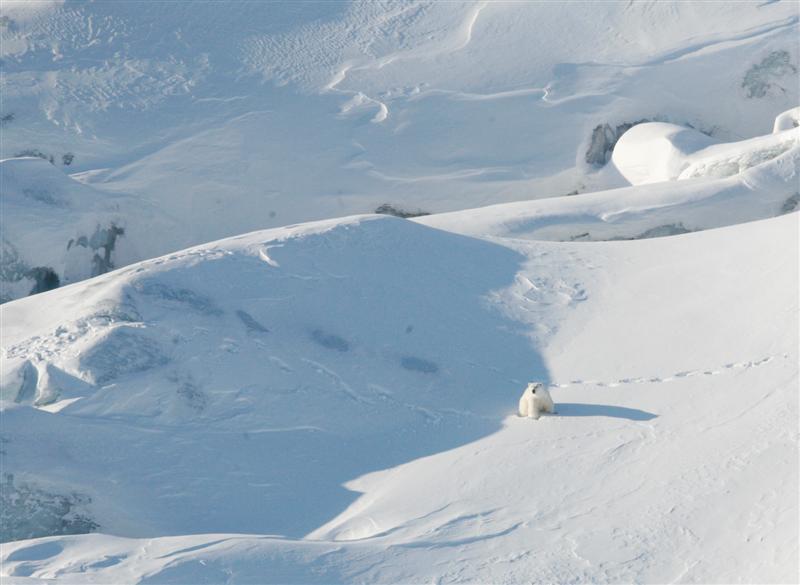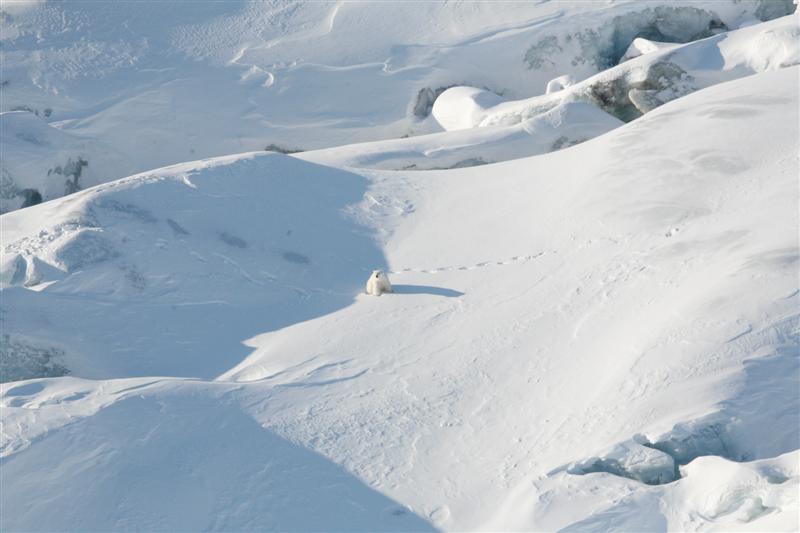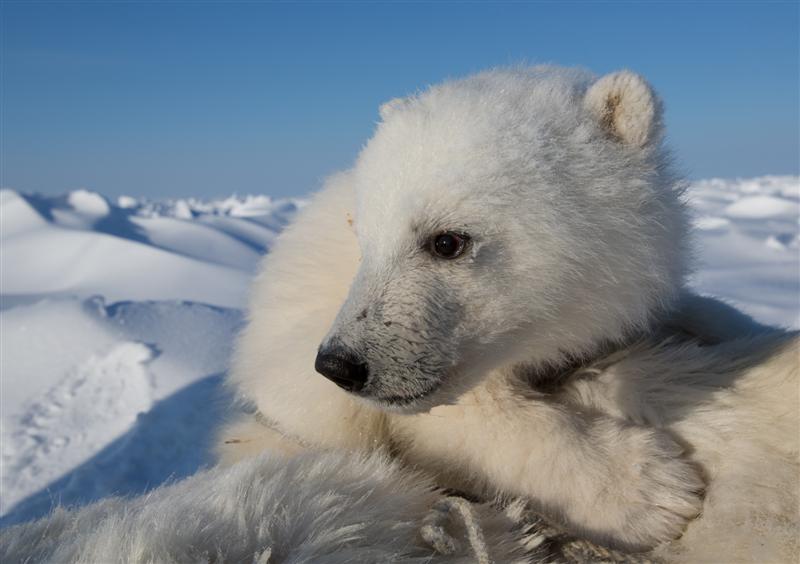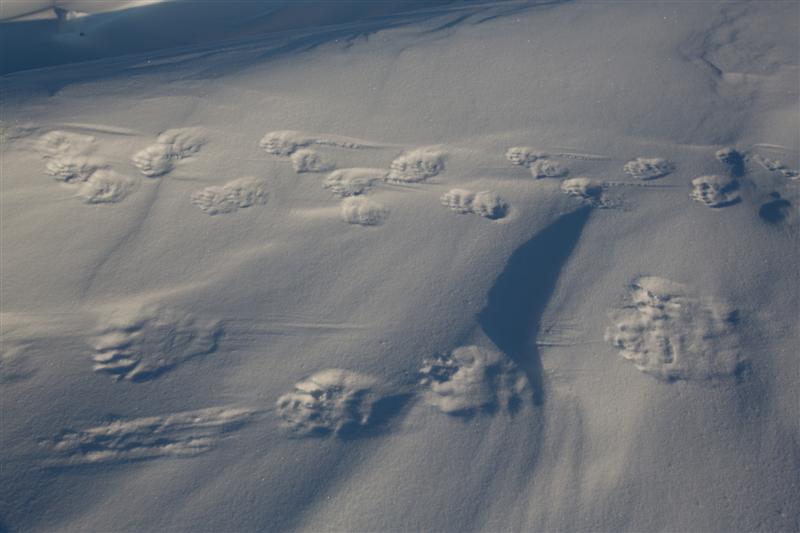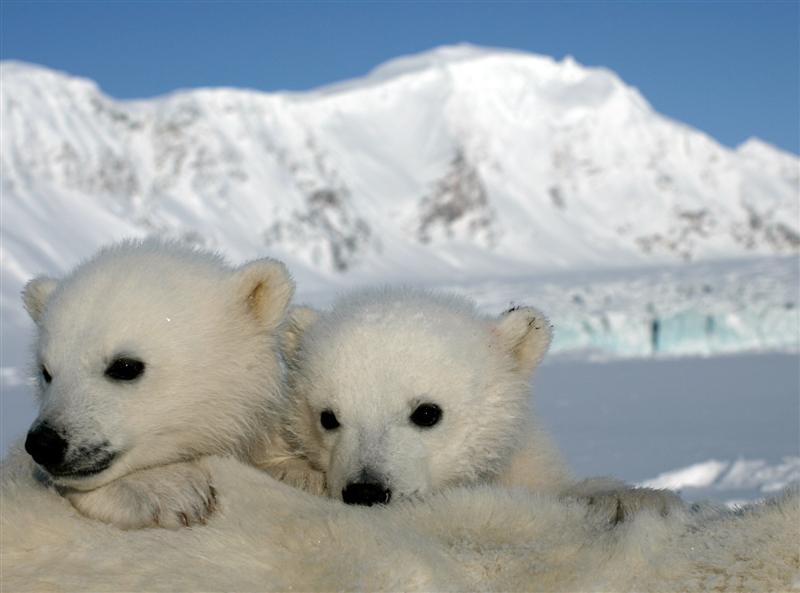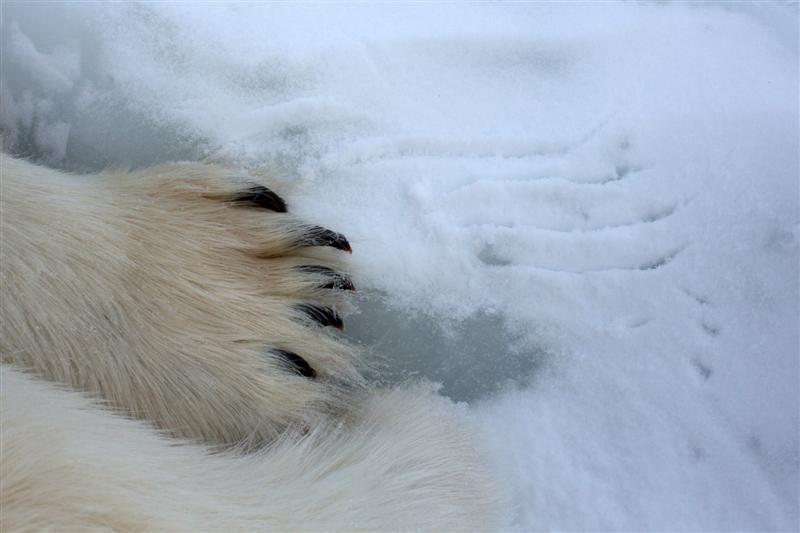Jon Aars is a researcher with the Norwegian Polar Institute, Norway’s main institution for research, environmental monitoring and mapping of the polar regions. With the support of WWF, Aars studies polar bear populations on the Norwegian island of Svalbard. Read all of his field notes from a Spring 2013 research expedition, and follow the bears on our Polar Bear Tracker.
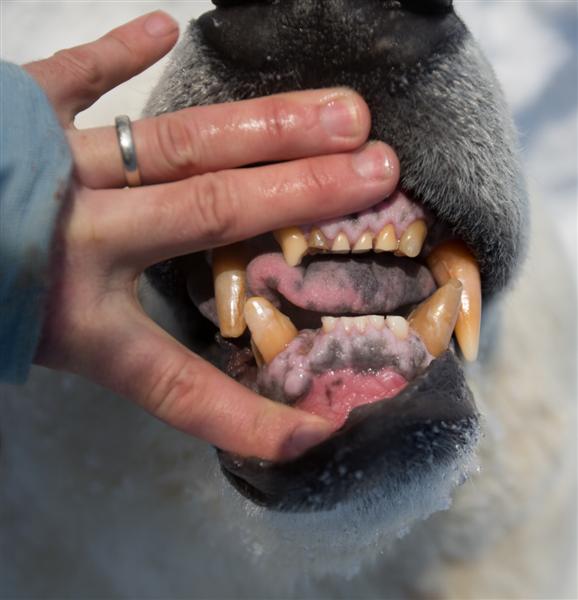
29 April – We left KV Svalbard a week ago, and have not been out flying for eight days because of bad weather. That is how it works in the Arctic, low pressure systems can bring bad weather for periods of days, and helicopter flying is risky if conditions are not good. With white snow, and moderate sun light, it is hard to see the contrasts on the snow and easy to crash a helicopter flying close to the ground. Darting bears, we fly on only a few meters altitude.
But today, when the weather suddenly improved, we flew to Storfjorden, between the largest islands in Svalbard. This is core polar bear habitat, and we were efficient working from early morning to late night. All together we handled 11 bears, a number we rarely reach in one day of work. It feels good to get that much done after a long period without being able to work, particularly as tomorrow will be our last field day this spring.
Among the bears we captured were two old females on 21 and 24 years of age, the former with a cub of the year and the latter with a yearling. Females this old more often have one cub than two, age having taken its toll. We also captured two different two-year-old bears. They will just have departed from their mothers and will have a challenging time ahead, when they have to learn to hunt on their own. One of them had managed to kill a ringed seal pup, that is at least a good breakfast.

